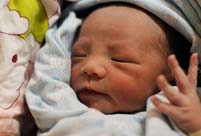 6 Chinese nurses win Florence Nightingale Medal
6 Chinese nurses win Florence Nightingale Medal
 Lady of mystery: Female SWAT team in prison disclosed
Lady of mystery: Female SWAT team in prison disclosed
 Tibetan ethnic costumes presented during tourism festival in NW China
Tibetan ethnic costumes presented during tourism festival in NW China
 Weekly selection of world photos (Aug.19-Aug.24)
Weekly selection of world photos (Aug.19-Aug.24)
 Boy pushed to air, 2 meters high by fountain in Huibei
Boy pushed to air, 2 meters high by fountain in Huibei
 Vintage cars exhibited at auto cultural festival in China's Shanxi
Vintage cars exhibited at auto cultural festival in China's Shanxi
 Military plane crashes in NE China
Military plane crashes in NE China
 Baby born to save his sister - the story of a savior sibling
Baby born to save his sister - the story of a savior sibling
 Those embarrassing copycat buildings
Those embarrassing copycat buildings
The days of China's banks raking in easy fat profits have gone, for now, as the slowing economy and market-based financial reform squeeze profits and extend bad loans, semi-annual reports have shown.
By Monday, seven commercial lenders had published their semi-annual reports, and all of them report slower profits and higher non-performing loan ratios, although the facts are better than expected.
Profits of Ping An Bank Co. Ltd slowed the most from last year's growth rate of 45.2 percent to this year's 11.3 percent. China Construction Bank (CCB) saw the smallest growth rate gap of 2.02 percent.
Industrial Bank Co. Ltd saw the non-performing loan ratio climb by the most 0.14 percentage points to 0.57 percent. And those of Bank of Communications and CCB stood at the highest 0.99 percent.
The numbers are in stark contrast to previous records with doubling of profits not uncommon.
Listed banks' first half performance was also in line with the data calculated by the China Banking Regulatory Commission (CBRC), the nation's banking regulator.
The combined net profits of the industry grew 13.83 percent to 753 billion yuan (121.5 billion U.S. dollars), compared with 23.3 percent in the same period a year ago. Non-performing loans totalled 539.5 billion yuan, an increase of 46.7 billion yuan from the year-beginning.
Slowing profits and rising bad loans are normal phenomena against the backdrop of weakening economic growth and market-based financial reform, analysts said.
China's economy has been stuck in a protracted slowdown, easing to 7.5-percent growth in the second quarter from 7.7 percent in the first three months.
As part of the drive to revitalize the economy through pumping more market impetus, the central bank scrapped the floor on lending rates in July, freeing banks to issue loans as cheaply as they wished.
Under the previous system, the central bank set guidelines for lending and deposit rates for commercial banks which were willing to lend to state-backed firms at artificially high rates.
The man-made rates gap became the major source of profits for state-backed banks. The reform has bridged the gap, but not as much as people anticipated, said Zhao Qingming, a researcher with CCB.
"Credit remains a rare resource, and banks have strong bargaining power, so the rates gap remains wide." he noted.
Zhao played down the bad loan risks, believing that bank assets are still expanding.
Bad loans mainly rose in eastern China's Jiangsu and Zhejiang provinces. Those in Shandong and Fujian provinces can not be taken lightly.
In terms of industry, manufacturing, wholesale and retail sectors saw the most increase of bad loans. Small business are also included.
In the second half of the year, insiders estimate profits will continue to slow, with profits of listed-banks easing to about eight percent.
The macro-economy has shown stabilizing signs, and third quarter data is not expected to be worse than the second. The annual profits of listed banks are likely to increase between 10-15 percent, Zhao Qingming said.
Zhao Xijun, professor of finance at China Renmin University, said as the government will step up efforts to eliminate outdated industries in the second half of this year, sectors on the reshuffling list will suffer more bad loans.
Analysts said China's banks may be about to enter a rocky period, and must improve to cope with the changes.
Last Monday, the central bank governor Zhou Xiaochuan said the bank is ready to liberalize deposit rates and the reform is underway as planned. He is personally optimistic.
Scrapping the floor of the deposit rates is regarded as the most critical yet most risky move in interest rate liberalization. If realized, banks will no longer sit on the rates gap to pocket handsome returns.
 August Full Moon celebrated across Greece
August Full Moon celebrated across Greece Top 10 Chinese provinces for the well-heeled
Top 10 Chinese provinces for the well-heeled  Fan Bingbing poses for Malaysian magazine Citta Bella
Fan Bingbing poses for Malaysian magazine Citta Bella Preview of Moscow air show
Preview of Moscow air show Wild dream: Hell-like training for bodyguard
Wild dream: Hell-like training for bodyguard  Zhang Xinyi covers COSMOPOLITAN
Zhang Xinyi covers COSMOPOLITAN China’s weekly story
China’s weekly story  The story of a savior sibling
The story of a savior sibling A collection of bizarre rooftop buildings around China
A collection of bizarre rooftop buildings around China 100th birthday of 'Little Mermaid'
100th birthday of 'Little Mermaid' Escort taskforce holds live-fire training
Escort taskforce holds live-fire training Death toll climbs to 76 in flood of NE China's Fushun
Death toll climbs to 76 in flood of NE China's Fushun Nokia's Global Headquarters: visiting a declining empire
Nokia's Global Headquarters: visiting a declining empire 2013 Taiwan Int'l Tourism Expo kicks off in Taipei
2013 Taiwan Int'l Tourism Expo kicks off in Taipei Photo story: Take a gap year
Photo story: Take a gap yearDay|Week|Month